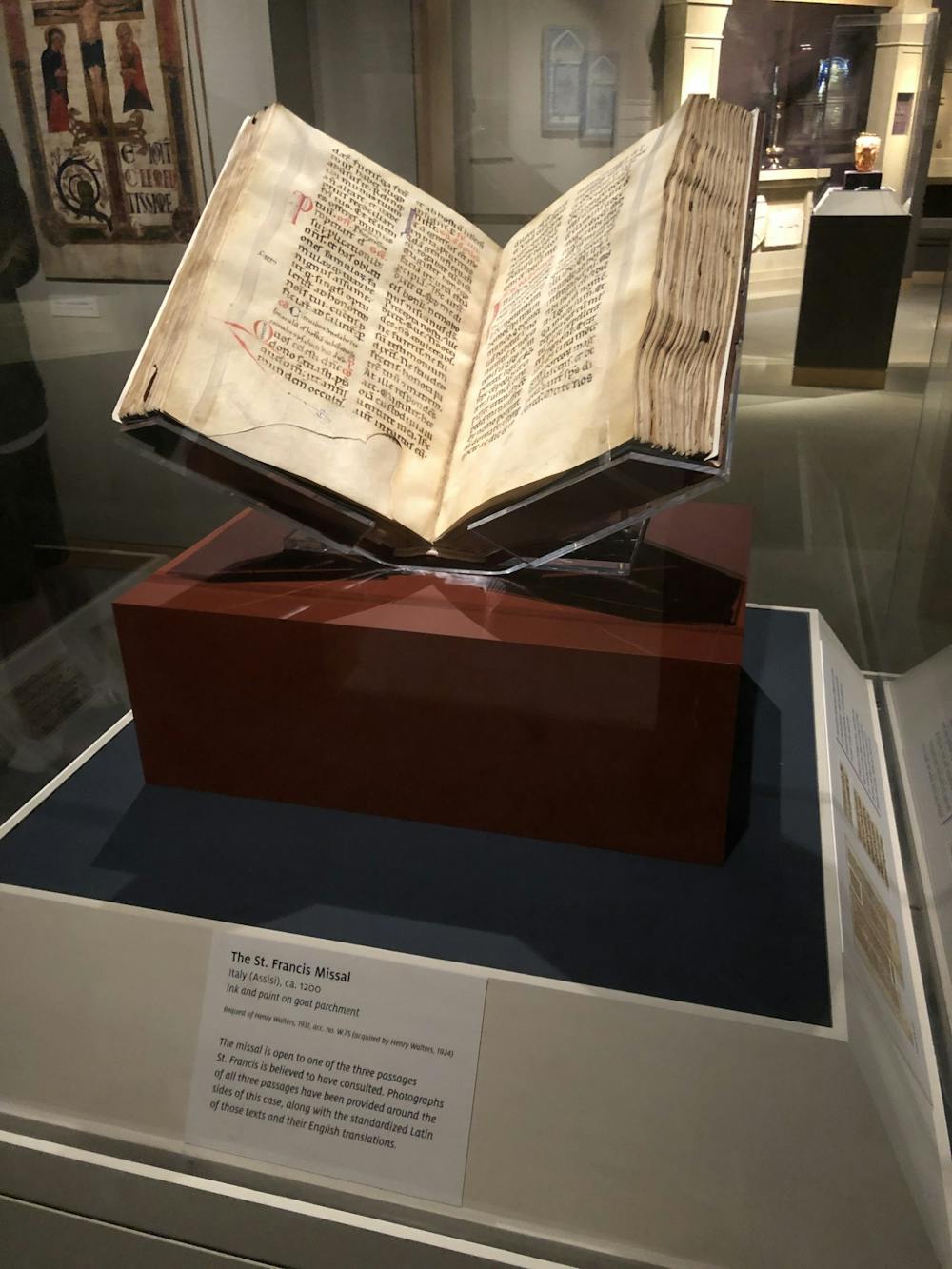For the first time in nearly 40 years, the St. Francis Missal has its own dedicated exhibition at the Walters Art Museum. Though the museum is currently closed to the public due to the coronavirus pandemic, the exhibition will be on display until May 31.
One of the most famous saints, St. Francis of Assisi was the patron saint of Italy and was the founder of the mendicant Franciscan Order. A figure of humility and charity, he was commonly associated with nature and wildlife and said to be the first person in history to receive the stigmata, the wounds of Jesus. An advocate for the poor, the current pope chose his papal name as Pope Francis, marking the first time a pope was been named after the saint.
In 1208, St. Francis of Assisi and two followers debated how best to serve God in the Church of San Nicolo in Assisi. Francis supposedly consulted the Missal, a large book containing the texts used in the Catholic mass, on the altar at three random times to symbolize the Holy Trinity. The Missal served as a seminal moment in the formation of the Franciscan Order and is believed to be a relic of St. Francis’ touch, thereby retaining his holy aura.
In 1924, Henry Walters, co-founder of the Walters, originally purchased the Missal from an art dealer in Paris, bringing the book back to Baltimore. The text has thus drawn Christians and avid historians alike from around the globe in pilgrimage to the city’s very own Walters Art Museum.
When I attended, the exhibit itself was modest and held in a small, intimate setting, perhaps as a reflection of St. Francis’ character. Of course, the centerpiece of the exhibit was the Missal. Each page featured passages from the Bible (including famous verses such as Mark 10:21, Luke 9:3, and Matthew 16:24) which urged the renouncement of material goods. At first, the book was open to the Latin passage of Mark 10:21 that St. Francis and his followers supposedly read over 800 years ago:
“Go, sell whatsoever thou hast, and give to the poor, and thou shalt have treasure in heaven,” it read.
Halfway through the exhibition, the pages were turned and another of the three passages were shown.
Surrounding it are other artifacts of the medieval era including a 14th-century diptych altarpiece with two plates attached at a hinge that supposedly contains fragments of St. Francis’ and St. Clare’s tunics. The fragile diptych is on display for the first time in the Walters’ history. There are paintings, altarpieces, ceramics and other depictions of St. Francis and his devout followers. Additionally, there are pieces describing the lives of St. Clare, the patron saint of embroiderers and Francis’ most famous female follower, and St. Anthony of Padua, the patron saint of lost objects.
While there has been some skepticism, historians have said that the displayed manuscript is likely to have been the same one St. Francis consulted and touched. This new exhibition follows a two-year restoration project of the Missal in which the cover was almost entirely replaced and the book was fully taken apart and delicately stitched back together.
Before the restoration, the book’s beech wood cover had crumbled almost entirely away and was littered with holes from insects. Its worn pages were torn and discolored and the ink was flaking off, to the point where the Missal could not be opened without damage. The binding was almost nonexistent. The extensive conservation process is documented in the exhibit and the entire book is now able to be read online on Ex Libris, the Walters’ manuscript website.
Yoseph Kim, a junior who visited the Walters, remarked that the exhibit wasn’t as impressive as he expected, but worthwhile nonetheless.
“It was historically interesting and educational, albeit somewhat aesthetically underwhelming,” he said. “It was really cool learning about how the museum has restored the Missal throughout its deep history.”
Junior Robert Kim described the experience of attending the exhibition as awe-inspiring.
“As a Christian, it felt a little surreal to be around a relic of St. Francis. Although the Missal was almost 800 years old, it shares the same basis as the sermons and discussions I have today. It seemed to really pull the figures out of the stories we tell and ground them in reality,” he said.
Currently studying towards a minor in History, Robert Kim was also struck by the breadth of other historical objects there.
“The restoration disguised just how old [the Missal] was. There were also paintings done by artists whose bones are probably dust by now, but the pieces look almost new. There’s just such an abundance of history behind each of those artifacts,” he said. “It impressed upon me just how ancient and prevalent my faith is. It was a well-done exhibit.”





